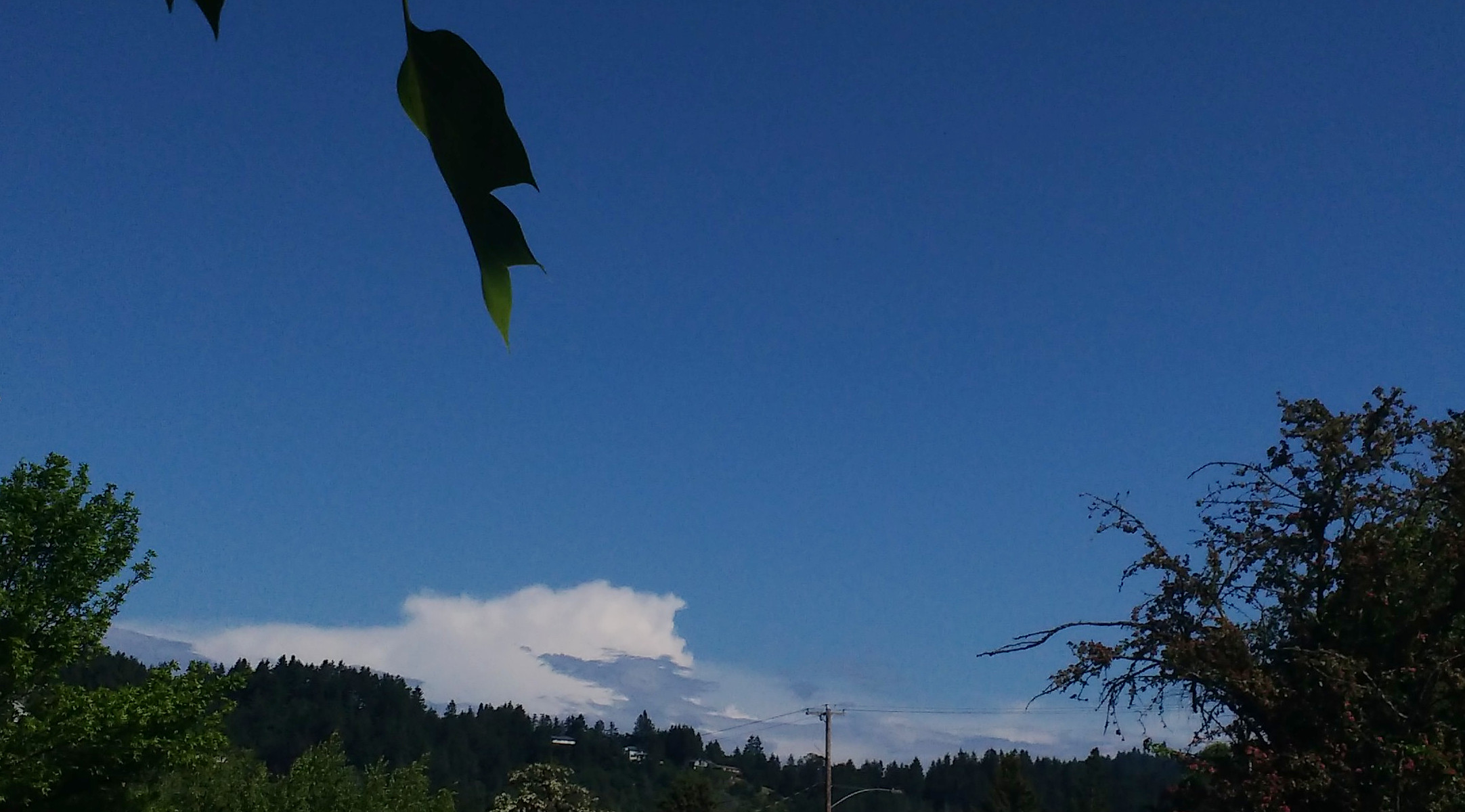A possible reason the cloud reflects less light is that it has a lower density of microscopic water droplets in it as it has more air spaces in between that cloud. Notice how water droplets have almost no preference of scattering so it scatters almost all wavelengths of light so it appears that they reflect all light wavelengths, hence the ordinary white color of clouds.
However, Air scatters light near the blue end of the spectrum and hence more air spaces mean more blue light scattering so the cloud appears more blue in between. Hence the lack of water vapor (which is mainly responsible for all wavelengths of light instead to scatter giving a white-like image), that cloud appears bluish.

